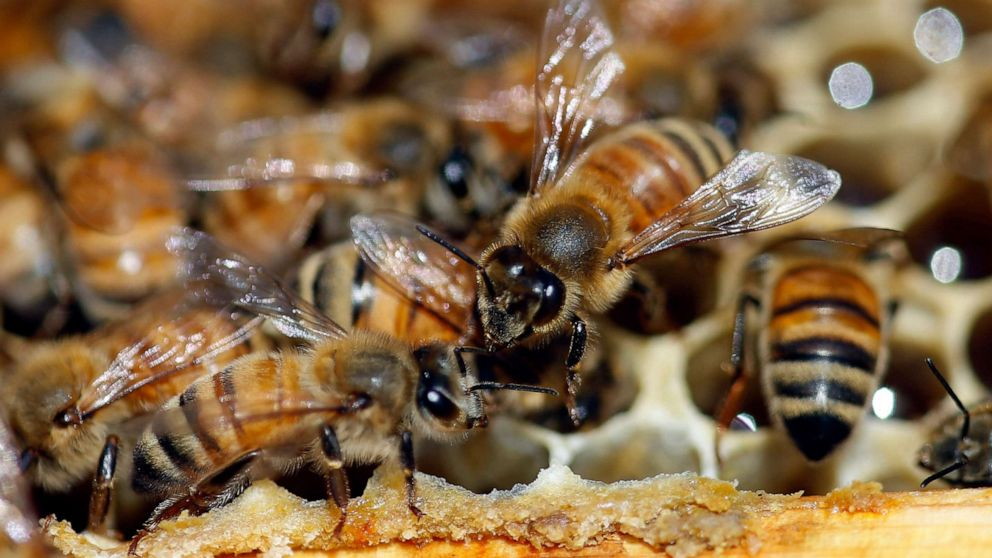In recent years, a subtle but concerning phenomenon has been unfolding globally – the gradual decline in bee populations. These buzzing insects, often overlooked, play a pivotal role in maintaining biodiversity, ensuring food security, and stabilizing ecosystems. As we witness a reduction in their numbers, the implications for both nature and agriculture are becoming increasingly apparent, demanding our attention and concerted action.
Why the Concern?
Bees, primarily honeybees and wild bees, serve as indispensable pollinators. Their role in the reproduction of numerous plant species, including crops, fruits, and flowers, is crucial for maintaining biodiversity. In fact, one-third of the world's food supply is dependent on pollination by bees. As key contributors to global agriculture, their decline directly threatens food security by impacting the production of fruits, vegetables, and nuts.
Beyond agriculture, bees contribute significantly to ecosystem stability. Their role extends to supporting other wildlife by providing habitats and contributing to the natural balance of various ecosystems. Their importance in the grand tapestry of life is far-reaching and often underestimated.
Places Where the Crisis is Evident
The impact of declining bee populations is evident in various regions across the globe.
-
Agricultural Regions: Areas heavily reliant on agriculture, such as the United States, Europe, and parts of Asia, are witnessing the tangible effects of declining bee populations on crop yields. Crop diversity and yields are compromised, directly affecting farmers and the availability of food.
-
Wilderness and Natural Habitats: Even in seemingly untouched wilderness areas, the decline in bee populations is affecting the balance of natural ecosystems. As pollinators, bees are integral to the reproductive cycles of many plant species, and their decline poses a threat to the overall health of these ecosystems.
-
Urban Environments: The impact of declining bee populations is not limited to rural areas. Urbanization and the use of pesticides in cities contribute to the decline of urban bee populations, impacting local biodiversity and green spaces. Urban gardens and parks, once vibrant with pollinator activity, may experience a decline in plant diversity.
Causes of Bee Decline and Potential Solutions
Understanding the root causes of bee decline is crucial for implementing effective conservation strategies.
-
Pesticide Use: The use of certain pesticides, particularly neonicotinoids, has been linked to the decline in bee populations. These chemicals, designed to protect crops, inadvertently harm bees. Implementing sustainable and bee-friendly farming practices, such as reducing pesticide usage and employing alternative pest management strategies, is crucial.
-
Habitat Loss: Urbanization and changes in land use lead to habitat loss for bees. Creating and preserving bee-friendly habitats in both rural and urban areas is essential. This includes promoting wildflower-rich environments and reducing the impact of monoculture farming.
-
Climate Change: Changing climatic conditions affect the availability of flowering plants, impacting the bees' food sources. Addressing climate change is integral to bee conservation. Supporting initiatives that focus on carbon reduction and sustainable practices is essential.
The Butterfly Effect: Impact Beyond Bees
The decline in bee populations has a ripple effect on other pollinators and the organisms dependent on them. Butterflies, birds, and even mammals are interconnected in the delicate web of pollination. Therefore, the decline of bees serves as a signal of broader ecological imbalances.
Buzzing Back to Balance
Addressing the decline in bee populations requires a collaborative effort from individuals, communities, and policymakers. From implementing policy changes to adopting bee-friendly practices in our daily lives, everyone plays a role in ensuring the survival of these essential pollinators.
By recognizing the urgency of the situation and taking decisive action, we can collectively work towards restoring the buzzing harmony of our ecosystems. The silent crisis of declining bee populations can be transformed into an opportunity for renewed conservation efforts, ensuring a vibrant and balanced natural world for generations to come.
